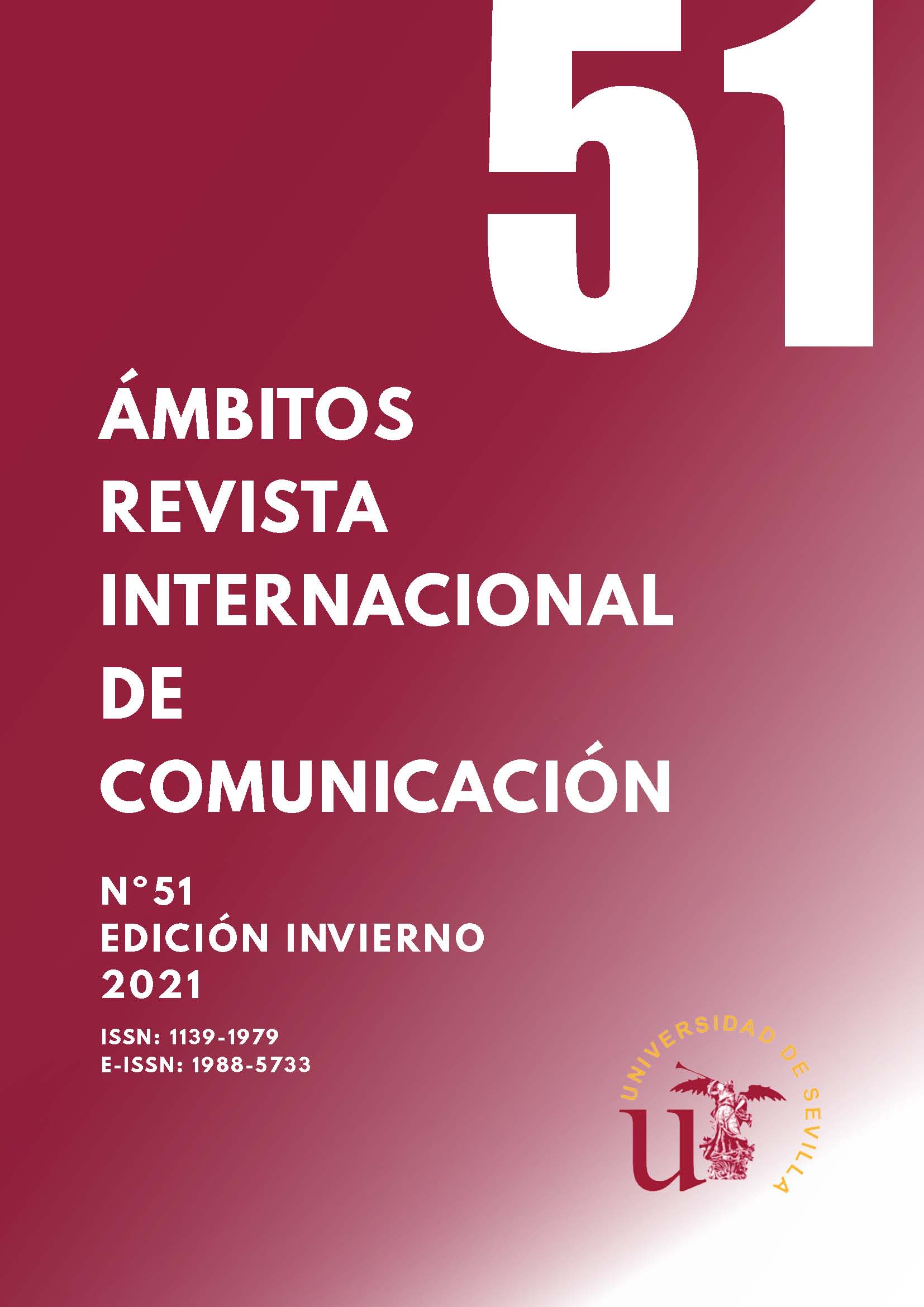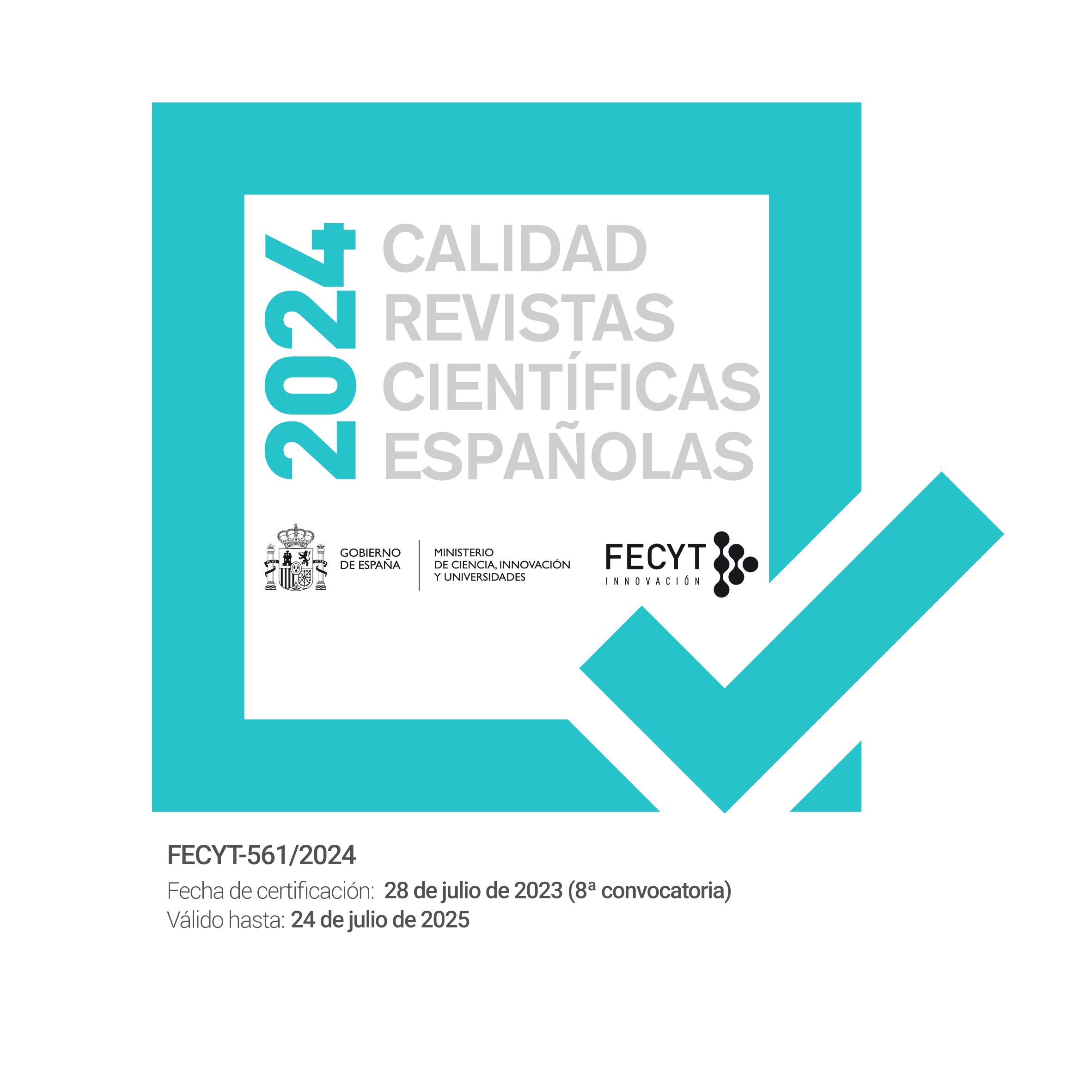Reality and fiction in informative discourse.
Crimes as inspiration for audiovisual projects in Spain.
DOI:
https://doi.org/10.12795/Ambitos.2021.i51.06Abstract
Since its appearance, television has been nourished by the crime show to increase the audience. Currently, documentaries and fiction and non-fiction series inspired by real events have turned viewers into judge and part of those events.
In Spain, the crime committed with girls of Alcàsser was a before and after in the use of this type of entertainment. From then on, numerous producers realized the value that real stories had on television and began to shape the genre on television.
This work makes visible the audiovisual products to which crimes committed in Spain have taken place and are analysed to see if they use sensational elements. In addition, the different formats that can be adopted are revealed: documentary, reportage, docu-series, docudrama ...
The analysis of audiovisual content is used as a quantitative and qualitative methodology at the same time. For this, a table has been designed that classifies a series of characteristics of the audiovisual documents studied.
One of the main conclusions is that every day more events are the subject of large audiovisual productions; with a great hardness in the images, but with an important number of sources that provide rigor to the final product.
Downloads
Metrics
References
Aguilera, G. F. V. y Morales, C. del R. M. (2019). Propuesta metodológica para el análisis del periodismo especializado en sucesos en el ecosistema digital. Miguel Hernández Communication Journal, 10(0), 271-284.
Arboccó de los Heros, M. y O’Brien, J. (2017). Impacto de la “televisión basura” en la mente y la conducta de niños y adolescentes. Avances En Psicología, 20(2), 43-57. https://doi.org/10.33539/avpsicol.2012v20n2.318
Atton, C. y Wickenden, E. (2005). “Sourcing Routines and Representation in Alternative Journalism: A Case Study Approach”. Journalism Studies, 6(3), 347–359. https://doi.org/10.1080/14616700500132008
Brito, X. y Guamán, N. (2019). Entretenimiento y el espectáculo como discursos televisivos. En Maroto Blanco, José Manuel y López Fernández, Rosalía (coord.). Migraciones y comunicación intercultural: una mirada interdisciplinar. Cuadernos Artesanos de Comunicación, 167, 57-75.
Capote, T. (19787). A sangre fría. Anagrama.
Carlson, M. y Seth, L. (2019). “Temporal Reflexivity in Journalism Studies: Making Sense of Change in a More Timely Fashion”. Journalism, 20(5), pp. 642–650. https://doi.org/10.1177/1464884918760675
Castañares, W. (1995). Géneros realistas de televisión: los reality show. Cuadernos de la información y Comunicación. 1, 79-91.
Cebrián, M. (1992). Géneros informativos audiovisuales. Ciencia 3.
Chillón, A. (1999). Literatura y periodismo: una tradición de relaciones promiscuas. Universidad Autónoma de Barcelona.
Cubells, M. (2013). ¿Y tú qué miras? Eldiaro.es libros.
Cubells, M. (2003). ¡Mírame, tonto! Robinbook.
Elías-Zambrano, R.; Jiménez-Marín, G. y García-Medina, I. (2018). Educomunicación, televisión y valores. Análisis de la programación desde una óptica publicitaria. Educação y Linguagem, 21(1), 95-107.
Farré, M. M. (1999). Ficción e información en el relato periodístico. Tendencias de noticiario actual. En Discurso para el cambio. Universidad de Chile. https://bit.ly/2IgiPyO
Fernández-Baena, J. (2005). La información en televisión ¿debilidades o manipulación? Comunicar, 25(2).
González-Oñate, C.; Jiménez-Marín, G. y Sanz-Marcos, P. (2020). Consumo televisivo y nivel de interacción y participación social en redes sociales: Análisis de las audiencias millennials en la campaña electoral de España. El Profesional de la Información, 29(5), e290501.
Linde-Navas, A. (2005). Effects that images of suffering, violence and death have on viewers and society. [Reflexiones sobre los efectos de las imágenes de dolor, muerte y sufrimiento en los espectadores]. Comunicar, XIII(25). https://doi.org/10.3916/C25-2005-076
Mancinas, R. y Reig, R. (2016). “Poder y ética periodística en la era digital”. En Cruz Álvarez, J. y Suárez-Villegas, J.C. Desafíos éticos en el periodismo. Dykinson.
Marín, C. (2019). Periodismo audiovisual: Información, entretenimiento y tecnologías multimedia. Gedisa.
Montfort, J. S. (2019, 3 de abril). ¿Ha llegado el ‘true crime’ español para quedarse? The Objective. https://bit.ly/37RhYgZ
Olausson, U. (2018). “The Celebrified Journalist”. Journalism Studies, 19(16): 2379–2399.
https://doi.org/10.1080/1461670X.2017.134954
Pinto Lobo, R. M. (1995). El discurso narrativo en televisión. CIC. Cuadernos de Información y Comunicación, 1, 69-69.
Puebla, B., Navarro, N. y Carrillo, E. (2015). Ficcionando en el siglo XXI. La ficción televisiva en España. Icono 14.
Quesada, M. (2007). Periodismo de sucesos. Síntesis.
Rodríguez-Cárcela, R. M. (2016). Las fuentes informativas en el periodismo de sucesos. Análisis de la prensa escrita. Correspondencia y Análisis, número 6. https://bit.ly/37KPndm
Román, A. (2013). Periodismo de Sucesos y Tribunales como área de especialización periodística. En Sobrados, M. (coord.), Presente y futuro en el Periodismo Especializado. Fragua.
Ruiz-Alba, N. y Susi de Oliveria, J. (2020). Nuevas fórmulas del ejercicio periodístico. Egregius.
Sánchez-Gey, N. (2019). El aumento de las noticias falseadas y sus consecuencias en el que hacer de los profesionales de la información en televisión. Ámbitos, Revista Internacional de Comunicación, 45, 159-181.
http://dx.doi.org/10.12795/Ambitos.2019.i45.03.
Smith, P. (2018, 12 de junio). Así reacciona tu cerebro al ver o leer historias de crímenes reales. Huffpost. https://bit.ly/2LpuHjF
Soler, L. (2005). El documental: gritos y susurros. Trípodos, 16, 83-97.
Thussu, D. (2007). News as Entertainment: The Rise of Global Infotainment. Sage
Tous, A. (2009). La muerte y la espectacularización de la realidad en la prensa española En El drama del periodismo: narración e información en la cultura del espectáculo: actas de las conferencias y comunicaciones del XI Congreso de la Sociedad Española de Periodística. Sociedad Española de Periodística.
Vodanovic, L. (2020). Aesthetic Experience, News Content, and Critique in Live Journalism Events. Journalism Practice. https://doi.org/10.1080/17512786.2020.1796763
Wolfe, T. (2012). El nuevo periodismo. Anagrama.
Downloads
Published
How to Cite
Issue
Section
License
Ámbitos. Revista Internacional de Comunicación is an open access journal, which means that all content is freely available at no charge to the user or their institution. Users may read, download, copy, distribute, distribute, print, search or link to the full text of articles, or use them for any other lawful purpose, without seeking prior permission from the publisher or author. This definition of open access is in accordance with the Budapest Open Access Initiative (BOAI).

Unless otherwise noted, all content in the electronic edition is distributed under a "Creative Commons Attribution-NonCommercial-ShareAlike 4.0 International License". You can consult the informative version and legal text of the licence here. This should be expressly stated in this way where necessary.
In case of acceptance of the manuscript, the authors cede the rights of the work for its publication to Ámbitos. Revista Internacional de Comunicación under the Attribution-NonCommercial-ShareAlike 4.0 International license contract (CC BY-NC-SA 4.0). The authors retain copyright and third parties are authorised to copy, distribute and make use of the work, provided they comply with the terms and conditions set out in the licence
- Cite the authorship and the original source of publication (journal, publisher and URL of the work).
- Do not use them for commercial purposes.
- If you remix, transform or create from the material, you must release your contributions under the same license as the original.
More information can be found at https://creativecommons.org/licenses/by-nc-sa/4.0/deed.es
- Abstract 563
- PDF (Español (España)) 180



















